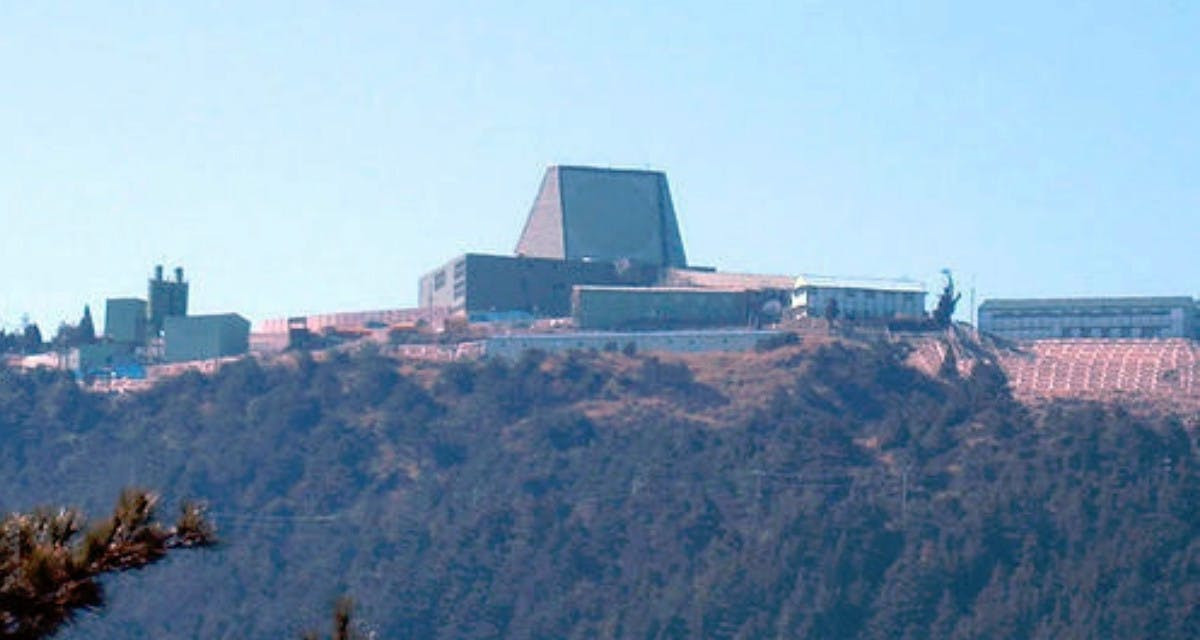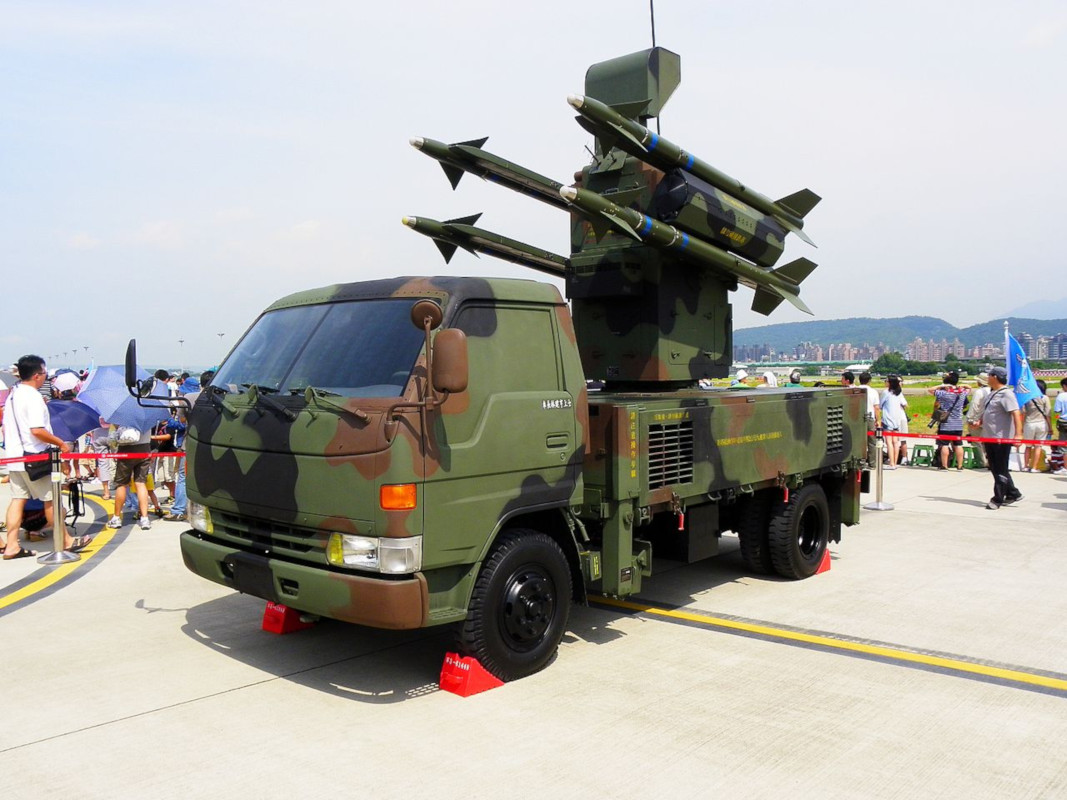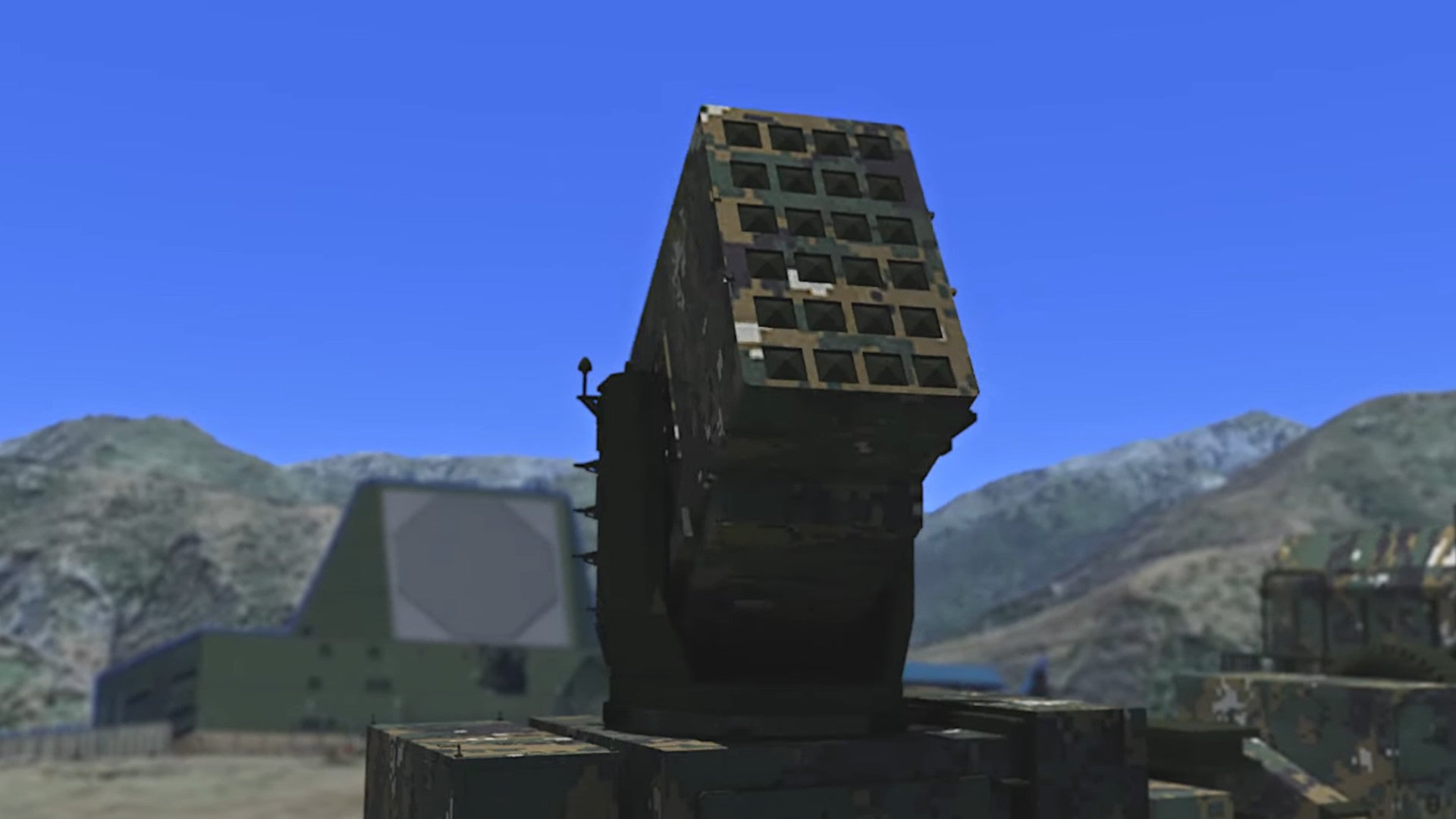Taiwan has expanded the development of its still-in-development Sea Oryx naval point defense system to include and land-based variant. This could help provide an important additional layer of defenses around various critical military installations against cruise missiles, anti-radiation missiles, and small drones, as well as potentially larger threats, such as helicopters and low-flying manned aircraft.
Taiwan’s National Chungshan Institute of Science and Technology, or NCSIST, showed a video presentation on Sea Oryx at biennial Taipei Aerospace & Defense Technology Exhibition that included a depiction of a truck-mounted version of the system for what appears to be the first time. The video also shows the point defense system fitted on a future guided-missile destroyer, which NCIST is also developing, as well as one of the country’s upcoming stealthy catamaran missile corvettes, a program The War Zone has been closely following.
Sea Oryx, which NCSIST first announced publicly in 2015, is similar in general concept to the RIM-116 Rolling Airframe Missile (RAM). The missile is a derivative of the Tien Chien 1L (TC-1L), or Sky Sword 1L, surface-to-air missile, which is, itself, derived from the AIM-9 Sidewinder. The weapon leverages the imaging infrared seeker from the earlier TC-1L missile, along with its forward control surfaces, and combined them with a new rear section that includes a significantly larger and more powerful rocket motor.
The complete system includes a launcher with either 12 or 24 missiles at the ready and a forward-looking infrared (FLIR) sensor to help identify targets before launch. Sea Oryx will also be able to use targeting data from off-board sensors, such as ship-mounted or land-based radars, to cue the missiles.

It was hardly surprising that Taiwan began development of Sea Oryx for naval applications, given the potential for conflict with China. The Chinese People’s Liberation Army (PLA) has been working hard to expand its arsenal of air-, sea-, and ground-launched anti-ship cruise missiles, in particular.
At the same time, the destroyers and frigates that make up the most capable components of Taiwan’s existing surface fleet have limited close-in defenses, typically relying on Raytheon’s Mk 15 Phalanx Close-In Weapon System (CIWS), if they have one fitted at all. The Tou Chiang, effectively a prototype for the future catamaran missile corvettes, also has a Phalanx CIWS. This point defense system combines a 20mm 6-barrel Vulcan cannon that fires at a rate of 4,500 rounds per minute together with a fire control radar.
The video below accompanied NCSIST’s initial unveiling of the Sea Oryx program in 2015.

Expanding the Sea Oryx program to include a ground-based version makes good sense for many of the same reasons. The threat from Chinese land-attack cruise missiles is growing, as well, and the PLA has the increasing ability to use aircraft, ships, and land-based launchers to engage targets anywhere on Taiwan from multiple vectors at once.
The Taiwanese military spent considerable effort in the past building hardened bases and other facilities on the Pacific-facing side of the island, believing that it would offer added protection against Chinese forces. It has increasingly become clear that those sites are now near-equally as vulnerable to cruise missiles, as well as other emerging threats, such as swarms of small unmanned aircraft. In May 2018, the PLA Air Force (PLAAF) sent bombers and fighter jets on a route that effectively encircled Taiwan in a clear demonstration of its capabilities.
In August 2018, it had already emerged that the Taiwanese military was looking to buy additional Phalanx CIWS point defense systems to install at a number of air bases. A ground-mounted Phalanx CIWS is supposedly already part of the defensive posture around Taiwan’s immensely valuable Leshan radar station, which houses an AN/FPS-115 PAVE PAWS phased array early warning radar. The U.S. military has also employed a ground-based Phalanx CIWS system, known as Centurion, for years, to protect forward operating bases against artillery rockets, mortar bombs, and similar threats.

The video NCSIST released clearly depicts a truck-mounted Sea Oryx system defending Leshan against a Chinese cruise-missile attack. A mobile system would also give the Taiwanese military the ability to rapidly reposition the system as necessary, both to respond to new threats on short-notice or to try to escape counter-attacks.
When they enter service, the land-based Sea Oryx could supplant or simply supplement ground-mounted CIWS systems at various strategic locations. They may also be able to take over from increasingly dated Antelope systems, which use the TC-1L, in a more general air defense short-range air defense role.

It is possible that Taiwan could seek to more directly combine Phalanx CIWS and Sea Oryx, as well. NCSIST could develop a system similar to Raytheon’s SeaRAM, which replaces the CIWS’ Vulcan cannon with a RIM-116 launcher, but retains the fire control suite, creating a more self-contained system.
Direct U.S. assistance in the development of Sea Oryx, or future variants of or upgrades for that system, is certainly not out of the question, either. U.S. President Donald Trump and his Administration have been major supporters of Taiwan from the beginning and have actively worked to fast-track various arms sales to the island already.

Whatever the case, Sea Oryx’s on land would be just one part of Taiwan’s larger, layered air and missile defense architecture. Those defenses are only set to become increasingly important as time goes on, especially given rising tensions between authorities in Taipei and Beijing in recent months. The United States, Taiwan’s principal international benefactor, has also seen a major trade war, among other things, strain its relations with China in the past few years.
Most recently, Taiwan has raised the ire of Chinese authorities by voicing support for protestors calling for greater freedoms in Hong Kong, a separate issue The War Zone
has covered in-depth. “As a democratic country & a responsible member of the international community, we are concerned about #HK,” read a post from the official Twitter account of Taiwanese President Tsai Ing-Wen on Aug. 14, 2019.
The reference to Taiwan as a “country” is almost certain to inflame tensions with Beijing, which sees the island as part of its integral territory and has threatened military action repeatedly if it appears that officials in Taipei are moving to declare full independence. The Chinese government has branded Tsai herself as an “independence extremist” in the past.
So, while it’s not clear when the system will enter service, it is increasingly apparent that there is a pressing need to bolster the island’s air and missile defenses sooner rather than later.
Contact the author: joe@thedrive.com
